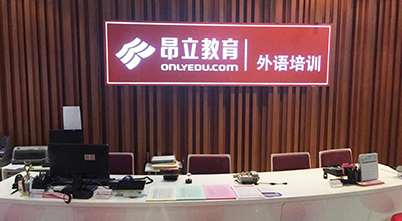START THE COUNTDOWN
When you imagine inventors, you probably picture a lone genius in a laboratory concocting brilliant devices, experimenting and redesigning until some concept or contraption works perfectly. At that point, the new invention is unveiled to the world, a stunning piece of new technology that instantly changes everything.
Well, you've got part of it right. There's certainly a lot of redesigning and experimenting when it comes to inventions, but it takes a lot longer than you think. It also takes far more people than that lone genius.
As you'll see when you read about these 10 world-changing inventions, no invention is created in a vacuum. Every single one was built on previous inventions created by other inventors years, decades or even centuries before. Every invention has problems, and it might not be until some other inventor comes along that they get solved. To confuse things further, it usually isn't the original inventor who gets all the credit, but rather the inventor who made the one crucial improvement that makes us all want one.
THE PLOW
Compared to some of the gleaming, electronic inventions that fill our lives today, the plow doesn't seem very exciting. It's a simple cutting tool used to carve a furrow into the soil, churning it up to expose nutrients and prepare it for planting. Yet the plow is probably the one invention that made all others possible.
No one knows who invented the plow, or exactly when it came to be. It probably developed independently in a number of regions, and there is evidence of its use in prehistoric eras. Prior to the plow, humans were subsistence farmers or hunter/gatherers. Their lives were devoted solely to finding enough food to survive from one season to the next. Growing food added some stability to life, but doing it by hand was labor intensive and took a long time. The plow changed all that.
Plows made the work easier and faster. Improvements in the plow's design made farming so efficient that people could harvest far more food than they needed to survive. They could trade the surplus for goods or services. And if you could get food by trading, then you could devote your day-to-day existence to something other than growing food, such as producing the goods and services that were suddenly in demand.
The ability to trade and store materials drove the invention of written language, number systems, fortifications and militaries. As populations gathered to engage in these activities, cities grew. It's not a stretch to say that the plow is responsible for the creation of human civilization.
WHEEL
The wheel is another invention so ancient that we have no way of knowing who first developed it. The oldest wheel and axle mechanism we've found was near Ljubljana, Slovenia, and dates to roughly 3100 B.C.
The wheel made the transportation of goods much faster and more efficient, especially when affixed to horse-drawn chariots and carts. However, if it had been used only for transportation, the wheel wouldn't have been as much of a world-changer as it was. In fact, a lack of quality roads limited its usefulness in this regard for thousands of years.
A wheel can be used for a lot of things other than sticking them on a cart to carry grain, though. Tens of thousands of other inventions require wheels to function, from water wheels that power mills to gears and cogs that allowed even ancient cultures to create complex machines. Cranks and pulleys need wheels to work. A huge amount of modern technology still depends on the wheel, like centrifuges used in chemistry and medical research, electric motors and combustion engines, jet engines, power plants and countless others.
PRINTING PRESS
Like many of the inventions on this list, the man we believe invented the printing press (Johann Gutenberg in the 1430s) actually improved on pre-existing technologies and made them useful and efficient enough to become popular. The world already had paper and block printing -- the Chinese had them as early as the 11th century -- but the complexity of their language limited popularity. Marco Polo brought the idea to Europe in 1295.
Gutenberg combined the idea of block printing with a screw press (used for olive oil and wine production). He also developed metal printing blocks that were far more durable and easier to make than the hand-carved wooden letters in use previously. Finally, his advances in ink and paper production helped revolutionize the whole process of mass printing.
The printing press allowed enormous quantities of information to be recorded and spread throughout the world. Books had previously been items only the extremely rich could afford, but mass production brought the price down tremendously. The printing press is probably responsible for many other inventions, but in a more subtle way than the wheel. The diffusion of knowledge it created gave billions of humans the education they needed to create their own inventions in the centuries since.
REFRIGERATION
Refrigerators cool things down by taking advantage of the way substances absorb and unload heat as their pressure points and phases of matter change (usually from gas to liquid and back). It's difficult to pinpoint a single inventor of the refrigerator, because the concept was widely known and gradually improved over the course of about 200 years. Some credit Oliver Evans' 1805 unproduced design of a vapor-compression unit, while others point to Carl von Linde's 1876 design as the actual precursor of the modern refrigerator in your kitchen. Dozens of inventors, including Albert Einstein, would refine or improve refrigerator designs over the decades.
In the early 20th century, harvested natural ice was still common, but large industries such as breweries were beginning to use ice-making machines. Harvested ice for industrial use was rare by World War I. However, it wasn't until the development of safer refrigerant chemicals in the 1920s that home refrigerators became the norm.
The ability to keep food cold for prolonged periods (and even during shipping, once refrigerated trucks were developed) drastically changed the food production industry and the eating habits of people around the world. Now, we have easy access to fresh meats and dairy products even in the hottest summer months, and we're no longer tied to the expense of harvesting and shipping natural ice -- which never could have kept pace with the world's growing population in any case.
COMMUNICATIONS
Maybe it's cheating to lump the telegraph, telephone, radio and television into one 'invention,' but the development of communication technology has been a continuum of increased utility and flexibility since Samuel Morse invented the electric telegraph in 1836 (building on the prior work of others, of course). The telephone simply refined the idea by allowing actual voice communications to be sent over copper wires, instead of just beeps that spelled out the plain text in Morse code. These communication methods were point-to-point, and required an extensive infrastructure of wires to function.
Transmitting signals wirelessly using electromagnetic waves was a concept worked on by many inventors around the world, but Guglielmo Marconi and Nikola Tesla popularized it in the early 20th century. Eventually, sound could be transmitted wirelessly, while engineers gradually perfected the transmission of images. Radio and television were new landmarks in communications because they allowed a s








 电子营业执照
电子营业执照 教育资质
教育资质 全国优秀教育网站
全国优秀教育网站 企业信用等级AA级
企业信用等级AA级